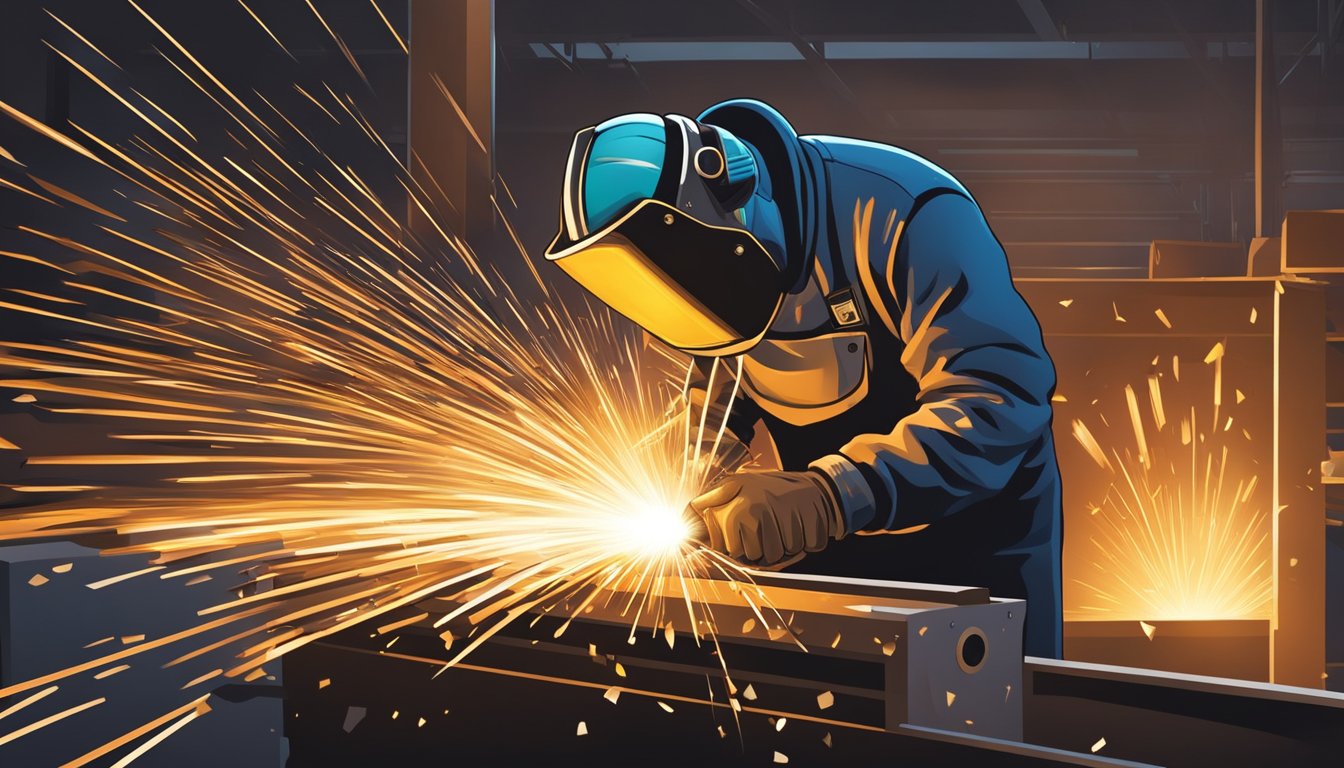Advanced Welding WPS: Customizing Specifications for Complicated Projects
Advanced Welding WPS: Customizing Specifications for Complicated Projects
Blog Article
The Ultimate Overview to Welding WPS Procedures: A Comprehensive Summary for Welders
In the complex world of welding, Welding Procedure Specs (WPS) serve as the backbone of making sure top quality, consistency, and safety and security in welding procedures (welding WPS). As we delve right into the different parts of a WPS and discover the details of credentials and accreditation, we will reveal the crucial duty these procedures play in the world of welding.
Relevance of WPS Procedures
Comprehending the importance of Welding Procedure Specifications (WPS) procedures is critical for making sure the high quality and stability of welded frameworks. WPS procedures act as a roadmap for welders, laying out the necessary actions, parameters, and materials needed to achieve an audio weld. By sticking to WPS guidelines, welders can make certain uniformity in their job, leading to structurally audio and dependable welds.
One of the key reasons why WPS procedures are essential is their duty in keeping weld top quality and stability. Following the specified welding parameters and methods described in the WPS helps avoid defects such as porosity, cracking, or insufficient fusion, which can compromise the strength and toughness of the weld.

Parts of a WPS
A Welding Treatment Spec (WPS) commonly makes up crucial components that detail the specific requirements for carrying out a weld, ensuring uniformity and quality in the welding procedure. The essential parts of a WPS consist of essential variables such as base steels, filler steels, interpass and preheat temperatures, welding procedures, securing gases, welding settings, and post-weld warmth treatment needs.
Base metals describe the products being signed up with, while filler metals are made use of to fill up the void between the base metals during welding. Preheat and interpass temperature levels are vital for controlling the warm input and stopping concerns like breaking or distortion. The welding process describes the specific method to be utilized, whether it's gas metal arc welding (GMAW), shielded metal arc welding (SMAW), or another technique. Protecting gases shield the weld pool from climatic contamination. Welding placements specify the positionings in which welding can be carried out. Post-weld warm therapy might be required to relieve tensions and boost the weld's properties. A complete understanding of these elements is crucial for developing a reliable and comprehensive WPS.

Credentials and Certification
Having actually developed the vital elements of a Welding Treatment Requirements (WPS), the emphasis now moves in the direction of the essential elements of certification and certification in welding techniques.

Certification, on the various other hand, is the official acknowledgment of a welder's credentials by an appropriate qualification body or organization. Welding qualifications are commonly based on the certain welding procedures, materials, and placements a welder is certified visit to deal with. Holding a legitimate welding qualification shows that a welder satisfies market criteria and is skilled to do welding tasks to the called for specifications.
Creating a WPS
To develop a Welding Treatment Requirements (WPS) that meets industry criteria, careful factor to consider of welding processes, products, and functional specifications is important (welding WPS). The primary step in producing a WPS is to determine the welding procedure to be used, such as gas steel arc welding (GMAW) or secured steel arc welding (SMAW) When the welding process is figured out, the next important facet is picking the suitable materials, taking into consideration aspects like base metal kind, density, and joint layout. Functional specifications such as welding current, voltage, travel rate, and protecting gas composition have to also be carefully specified in the WPS.

Executing and Keeping An Eye On WPS
Upon wrapping up the comprehensive Welding Treatment Specification (WPS) that meticulously information welding processes, products, operational specifications, and quality control steps, the focus shifts to properly carrying out and checking the recognized procedures. Implementation includes guaranteeing that all welders associated with the task know with the WPS and follow it thoroughly during the welding procedure. This calls for offering adequate training and guidance to ensure adherence to the defined treatments. Keeping an eye on the WPS includes continuous oversight to confirm that welding tasks line up with the documented requirements. Examinations, testing, and quality control actions are important elements of the tracking procedure to identify any problems or discrepancies promptly. Normal audits and her comment is here reviews of the welding procedures aid in preserving uniformity and top quality throughout the project. Effective implementation and monitoring of the WPS are vital for making certain the integrity, strength, and safety and security of the welded joints, eventually contributing to the general success of the welding task.
Conclusion
Finally, understanding and following Welding Treatment Requirements (WPS) is essential for welders to make certain high quality, uniformity, and safety and security in their job. By recognizing the parts of a WPS, obtaining proper certifications and certifications, producing comprehensive treatments, and implementing and checking them properly, welders can improve their skills and effectiveness in welding techniques. Sticking to WPS procedures is crucial for generating high-grade welds and meeting industry standards.
In the intricate globe of welding, Welding Procedure Specifications (WPS) serve as the foundation of guaranteeing quality, consistency, and safety and security in welding procedures. The welding procedure details the details method to be utilized, whether it's gas steel arc welding (GMAW), shielded steel arc welding (SMAW), or another technique.To create a Welding Procedure Spec (WPS) that satisfies market standards, careful consideration of welding procedures, products, and operational parameters is official statement necessary. The initial step in developing a WPS is to determine the welding process to be utilized, such as gas metal arc welding (GMAW) or protected metal arc welding (SMAW)Upon wrapping up the thorough Welding Treatment Requirements (WPS) that diligently information welding processes, materials, operational specifications, and top quality guarantee steps, the focus moves to successfully implementing and keeping an eye on the established treatments.
Report this page